
Visual Informatics
Scope & Guideline
Leading the Charge in Computer Graphics Innovation
Introduction
Aims and Scopes
- Visual Analytics and Data Exploration:
The journal emphasizes the development of novel visual analytics techniques that facilitate the exploration and analysis of complex datasets, enabling users to derive insights through interactive visual representations. - Human-Centric Visualization Design:
A core focus is on designing visual systems that prioritize user experience and cognitive understanding, ensuring that visualizations are intuitive and effective for decision-making processes. - Integration of AI and Machine Learning:
The journal features research on integrating artificial intelligence and machine learning with visualization methodologies, enhancing the capabilities of visual systems in data interpretation and predictive analytics. - Multimodal and Interactive Systems:
Research on multimodal interaction and immersive systems, including virtual and augmented reality applications, is a key area, reflecting the journal's commitment to advancing interactive visualization technologies. - Interdisciplinary Applications:
'Visual Informatics' encourages contributions from various fields, including healthcare, social sciences, and engineering, showcasing the versatility of visualization techniques in solving real-world problems.
Trending and Emerging
- Generative AI in Visualization:
A significant trend is the integration of generative AI techniques in visualization, as seen in papers discussing generative adversarial networks for image generation and data representation, showcasing the potential of AI to enhance creative visualization solutions. - Augmented and Virtual Reality Applications:
The rise of augmented and virtual reality applications in visualization is evident, with increasing research focused on immersive environments that support complex data interactions and enhance user experiences. - Explainable AI and Visualization:
There is a growing emphasis on explainable AI in visualization contexts, particularly in areas such as anomaly detection and decision-making, where understanding the rationale behind AI outputs is critical for trust and usability. - Visual Analytics in Social Media and Online Education:
Research related to visual analytics for social media data and online education environments is on the rise, reflecting the increasing importance of these domains in contemporary society and the need for effective data interpretation. - Interactive and User-Centric Data Systems:
Emerging themes also include the development of interactive systems designed to enhance user engagement and facilitate deeper data exploration, underscoring a shift towards more participatory approaches in data analysis.
Declining or Waning
- Traditional Static Visualization Techniques:
There has been a noticeable reduction in publications focused exclusively on traditional static visualization methods, as the field increasingly favors dynamic and interactive approaches that enhance user engagement. - Basic Data Visualization Surveys:
While foundational surveys have been instrumental in establishing the field, recent issues reflect a decline in basic survey papers, as researchers now prefer to present applied case studies and innovative methodologies. - Single-Domain Focused Research:
Research that centers on a single domain without interdisciplinary connections is becoming less common, as the journal increasingly favors studies that integrate insights from multiple fields to address complex visualization challenges.
Similar Journals

Journal on Multimodal User Interfaces
Innovating Interfaces for a Smarter TomorrowJournal on Multimodal User Interfaces, published by Springer, serves as a vital platform for scholarly exchange in the rapidly evolving fields of Human-Computer Interaction and Signal Processing. Established in 2008 and continuing through 2024, this journal maintains a high profile in academia, currently ranking in the Q2 category for both fields, indicating its significant contribution to ongoing research and practical applications. With its Scopus rankings placing it at #34 in Signal Processing and #49 in Human-Computer Interaction, it is recognized for publishing high-quality, impactful research. Although it is not an Open Access journal, the Journal on Multimodal User Interfaces remains accessible through institutional subscriptions. Researchers, professionals, and students will find the journal an essential resource for advancing knowledge and fostering collaboration in multimodal interaction technologies, which are crucial for enhancing user experience and developing intelligent systems.

Applied Computing and Informatics
Pioneering Research for a Digital FutureApplied Computing and Informatics, published by Emerald Group Publishing Ltd, is a prominent open-access journal that has been serving the academic community since 2011. With a focus on advancing the fields of Computer Science Applications, Information Systems, and Software, this journal has established itself as a noteworthy publication, currently ranking in the Q3 quartile for each of its categories in 2023. The journal is particularly recognized for its commitment to disseminating high-quality research, as evidenced by its impressive Scopus rankings—placing it in the 92nd percentile for Computer Science Applications and the 91st percentile for both Information Systems and Software. Based in Saudi Arabia, it adopts a global perspective, inviting contributions from researchers worldwide. With its open-access policy, Applied Computing and Informatics ensures that cutting-edge research is accessible to a broad audience, fostering collaboration and innovation within the computing and informatics disciplines. This journal is an essential resource for academics, professionals, and students seeking to keep abreast of the latest trends and developments in their field.
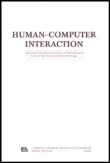
HUMAN-COMPUTER INTERACTION
Shaping Tomorrow's Technology with Today's InsightsHUMAN-COMPUTER INTERACTION is a premier academic journal published by Taylor & Francis Inc, dedicated to the interdisciplinary field of HCI, which explores the dynamic interactions between humans and computers. With its ISSN 0737-0024 and E-ISSN 1532-7051, the journal maintains a strong presence within the academic community and is recognized for its significant impact, holding a commendable impact factor that underscores its relevance. Ranked in the Q1 category for both Applied Psychology and Human-Computer Interaction, it occupies a critical position in Scopus rankings, listed as #15 in Applied Psychology and #11 in Computer Science, Human-Computer Interaction, placing it in the top 6% of relevant fields. Covering a broad spectrum of topics from usability studies to user experience design, the journal aims to facilitate innovative research and provide insights that bridge theoretical frameworks and practical applications. Published since 1985 and continuously evolving, HUMAN-COMPUTER INTERACTION remains an essential resource for researchers, professionals, and students eager to contribute to and benefit from advances in understanding how technology can effectively serve human needs.

IEEE Open Journal of the Computer Society
Bridging Ideas and Innovation in TechnologyIEEE Open Journal of the Computer Society is an esteemed open-access journal dedicated to advancing the field of computer science. Published by IEEE-INST ELECTRICAL ELECTRONICS ENGINEERS INC since 2020, this journal promotes innovative research and scholarly communication in a rapidly evolving technological landscape. With a notable Q1 ranking in the Computer Science (miscellaneous) category and a high Scopus percentile of 92, it serves as a premier platform for disseminating cutting-edge findings and interdisciplinary studies. The journal is committed to facilitating unrestricted access to valuable insights, fostering collaboration among researchers, professionals, and students alike. As it continues to publish impactful articles through 2024 and beyond, the IEEE Open Journal of the Computer Society remains a vital resource for anyone interested in the latest trends and developments in computer science.
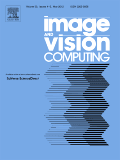
IMAGE AND VISION COMPUTING
Unveiling the future of signal processing and computer vision.Image and Vision Computing, published by Elsevier, serves as a leading international journal focused on the dynamic fields of computer vision, pattern recognition, and signal processing. With its esteemed Q1 category rankings in these areas and an impressive standing in Scopus metrics, where it ranks 19th in Computer Vision and 23rd in Signal Processing, this journal has firmly positioned itself at the forefront of academic research and innovation. Established in 1983, it continues to publish cutting-edge research that drives advancements in technology and applications across various domains. The journal is committed to disseminating high-quality, peer-reviewed articles that address significant challenges and propose novel solutions, making it an essential resource for researchers, practitioners, and students alike. While not an open access journal, Image and Vision Computing offers a wealth of valuable insights into the ever-evolving landscape of visual computing technologies.

Computational Visual Media
Pioneering research in computational visual technologies.Computational Visual Media, published by TSINGHUA UNIVERSITY PRESS, is a premier open access journal dedicated to advancing the fields of Artificial Intelligence, Computer Graphics and Computer-Aided Design, and Computer Vision and Pattern Recognition. Since its inception in 2015, it has established a robust position within the academic community, consistently achieving Q1 rankings across its categories as of 2023. With exceptional Scopus rankings, including a remarkable percentile standing in the top 10% globally, the journal serves as a vital resource for researchers, professionals, and students eager to explore cutting-edge methodologies and technologies in computational visual media. The journal’s open access format enhances accessibility, fostering global collaboration and dissemination of knowledge, making it an indispensable platform for those at the forefront of innovation in these dynamic fields. The journal is headquartered in Beijing, China, and aims to publish high-quality research that not only contributes to theoretical advancements but also addresses practical challenges within computational visual technologies.
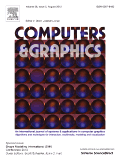
COMPUTERS & GRAPHICS-UK
Pioneering Insights in Human-Computer InteractionCOMPUTERS & GRAPHICS-UK is a premier journal dedicated to the fields of computer graphics, computer-aided design, and human-computer interaction. Published by Pergamon-Elsevier Science Ltd, this esteemed journal has been a critical resource for researchers and professionals since its inception in 1975. With an impressive impact factor and ranked in the second quartile for key disciplines such as Computer Vision and Pattern Recognition, and Engineering (Miscellaneous), it provides a platform for high-quality, peer-reviewed research spanning theoretical advancements, innovative technologies, and practical applications. Notable for its interdisciplinary approach, the journal also embraces contributions that bridge diverse areas within computer science. Although lacking Open Access options, readers can benefit from its rich archive and cross-disciplinary insights, making it essential for anyone looking to advance their knowledge and practice in computer graphics and related fields. The journal is located in the United Kingdom, at The Boulevard, Langford Lane, Kidlington, Oxford OX5 1GB, and continues to be a cornerstone for scholarly exchange and advancement in the digital visualization domain.

Proceedings of the ACM on Computer Graphics and Interactive Techniques
Navigating the Frontiers of Graphics TechnologyProceedings of the ACM on Computer Graphics and Interactive Techniques is a prestigious journal published by the Association for Computing Machinery (ACM), dedicated to advancing the field of computer graphics and interactive techniques. With an impactful presence in both the Q1 quartiles for Computer Graphics and Computer-Aided Design and Computer Science Applications as of 2023, this journal serves as a vital platform for disseminating cutting-edge research, innovative methodologies, and transformative applications. The journal covers a wide array of topics within the realm of computer graphics, fostering a vibrant community of researchers, professionals, and students who are committed to pushing the boundaries of technology. While the journal is not open access, it ensures wide visibility and rigorous peer-reviewed content, making it an essential resource for anyone invested in the dynamic landscape of computer science. Located in New York, USA, the Proceedings of the ACM on Computer Graphics and Interactive Techniques continues to play a crucial role in shaping the future of interactive systems and graphics technology.
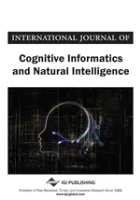
International Journal of Cognitive Informatics and Natural Intelligence
Fostering Collaborative Insights in Cognitive TechnologiesThe International Journal of Cognitive Informatics and Natural Intelligence, published by IGI Global, is an essential resource for researchers and professionals exploring the intersections of cognitive informatics, artificial intelligence, and human-computer interaction. Since its establishment in 2007, this journal has focused on advancing the understanding of cognitive systems and their applications in natural intelligence, contributing significantly to the fields of software engineering and interface design. Operating out of the United States, the journal aims to disseminate high-quality research and innovative methodologies to foster interdisciplinary collaboration. Despite its current standing in Q4 quartiles for the fields of Artificial Intelligence, Human-Computer Interaction, and Software, it serves as a vital platform for emerging scholars and seasoned professionals alike seeking to explore new frontiers in cognitive technologies. While it does not provide direct open access, these publications are instrumental in shaping academic discourse, and contribute to ongoing advancements in how we understand and integrate cognitive science into practical applications.
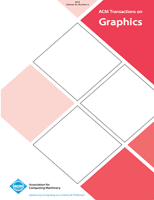
ACM TRANSACTIONS ON GRAPHICS
Pioneering Research in Visual ComputingACM Transactions on Graphics, a premier journal published by the Association for Computing Machinery, stands at the forefront of research in the field of computer graphics and computer-aided design. With its ISSN 0730-0301 and E-ISSN 1557-7368, this highly respected publication has maintained a stellar reputation since its inception in 1982, showcasing groundbreaking work that spans the latest innovations and applications in graphics technology. Ranked within the top tier (Q1) of its category in 2023 and occupying the 5th position out of 106 in the Scopus rankings, this journal holds a significant impact factor, reflecting its critical role in advancing knowledge and fostering collaboration among researchers, professionals, and students alike. Although it does not offer open access options, the journal provides a diverse array of scholarly articles aimed at delineating theoretical advances, practical techniques, and emerging trends within the discipline, ensuring that its readership remains at the cutting edge of the evolving landscape of digital graphics.